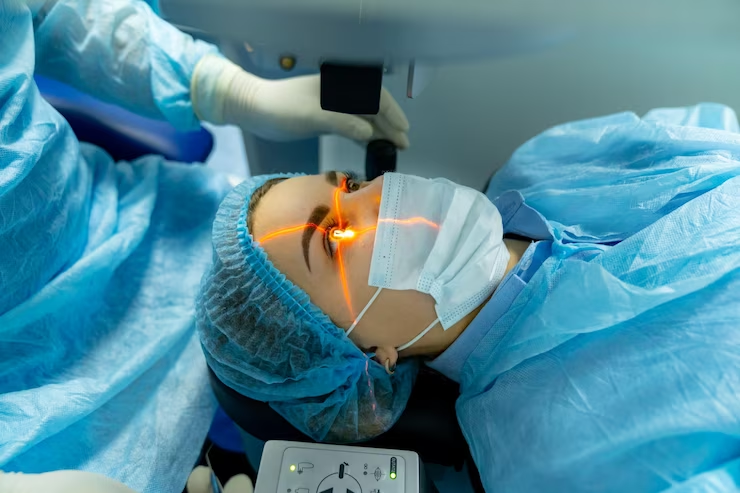The cornea, the eye's transparent front layer, is crucial for vision. It plays a significant role in focusing light onto the retina, enabling us to see clearly. When the cornea is damaged or diseased, it can lead to vision impairment or even blindness. Fortunately, advancements in corneal treatment are providing hope and renewed sight to those affected by corneal conditions. This blog post will highlight the innovative procedures and technologies that are driving progress in treating corneal diseases and injuries.
A New Era of Corneal Surgery
- An Artificial Corneal Solution
Keratoprosthesis, a surgical intervention aimed at restoring vision in cases of severely damaged corneas, involves the replacement of the damaged cornea with an artificial one. This procedure, often employed when traditional corneal transplants are unsuccessful or deemed unsuitable, has witnessed remarkable success rates. Notably, the Boston Keratoprosthesis is frequently utilized for this purpose, offering a ray of hope to patients facing vision challenges. One pivotal aspect of this procedure is the cross-linking operation, which reinforces the stability and longevity of the implanted artificial cornea, contributing significantly to the patient's visual rehabilitation and overall ocular health.
- Advanced Laser Techniques for Corneal Reshaping
Phototherapeutic Keratectomy (PTK) and Laser-Assisted In Situ Keratomileusis (LASIK) are laser procedures that reshape the cornea to correct refractive errors. Advances in laser technology, such as topography-guided LASIK, now allow for a more personalized approach, offering a higher level of precision and better visual outcomes.
- Crosslinking for Keratoconus
Corneal crosslinking (CXL) has become a cornerstone in managing keratoconus, a progressive thinning and bulging of the cornea. CXL strengthens the chemical bonds in the corneal tissue, halting the progression of the disease and sometimes even flattening the cornea to a more normal shape, thus improving vision.
- Endothelial Cell Therapy
Innovations in cell therapy are promising for the treatment of corneal endothelial disorders, such as Fuchs' dystrophy. Researchers are exploring the use of cultured endothelial cells that can be injected into the cornea, potentially eliminating the need for full corneal transplantation.
- Minimally Invasive Corneal Transplants
Techniques like Descemet's Stripping Automated Endothelial Keratoplasty (DSAEK) and Descemet's Membrane Endothelial Keratoplasty (DMEK) have transformed corneal transplant surgery. These procedures involve transplanting only the innermost layers of the cornea, thereby reducing recovery times and improving the success rates of corneal transplants.
- Pioneering the Future: 3D Printed Corneas
One of the most exciting advancements on the horizon is the development of 3D printed corneas. Bioprinting technology offers the potential to create customized, bio-compatible corneas that could address the shortage of donor tissues available for transplant.
The Impact of Technological Advancements on Patient Lives
These technological advancements have the potential to transform lives significantly. Improved accuracy and effectiveness of treatments lead to better visual results and quicker recoveries, allowing patients to return to their daily activities with minimal interruption.
Conclusion
A clear vision is a vital aspect of our quality of life, and maintaining corneal health is integral to that end. The remarkable advances in corneal treatment underscore the medical community's commitment to preserving and restoring vision. As these technologies continue to evolve and become more widely accessible, the hope for individuals with corneal diseases to achieve improved vision health grows ever stronger.





Comments